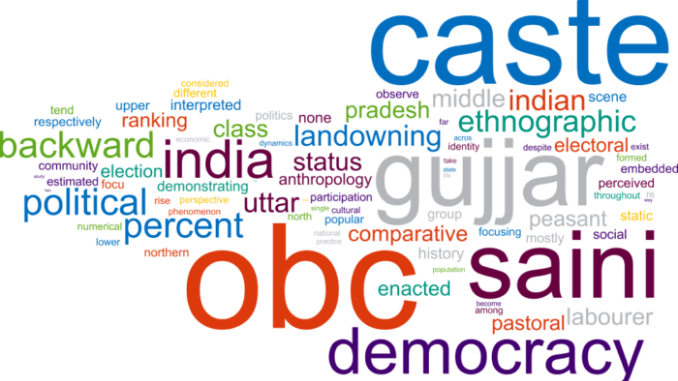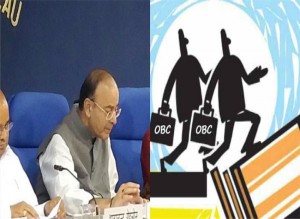Context:
- G. Rohini Commission is constituted to examine the issue of Sub-categorization of Other Backward Classes (OBCs) in Central List.
- The commission earlier had term till November 30, 2018 but with extension it will now work till 31st May, 2019.

Commission for sub-categorization of OBCs created:
- The commission has been established under Article 340 of Constitution under which Mandal commission had recommended 27% reservation for socially and educationally backward classes, was appointed.
- Sub-categorisation of OBCs aims to ensure more equitable distribution of reservations in government jobs and educational institutions so that dominant groups among OBCs do not corner all benefits. The exercise will involve sub-categorisation of 5,000 castes in central OBC list.
Commission’s Terms of reference
- The commission will examine extent of inequitable distribution of benefits of reservation among castes included in broad category of OBCs, especially with reference to OBCs included in the Central list.
- It will also take up exercise of identifying respective castes/sub-castes/communities synonyms in Central List of OBCs and classify them into their respective sub-categories. It will work out mechanism, norms, criteria and parameters, in scientific approach, for sub-categorization within such OBCs.
Key Facts:
- The National Sample Survey (NSS) data from 2011-12 show that about 19% of the sample claims to be Dalit, 9% Adivasi, and 44% OBC
- Among the population aged 25-49, less than 7% have a college degree
- By most estimates, less than 3% of the whole population is employed in government and public-sector jobs
- Since reservations cover only half the college seats and public-sector jobs, the mismatch is obvious
- A vast proportion of the population eligible for reservations must still compete for a tiny number of reserved and non-reserved category jobs
- It is not surprising that there is tremendous internal competition within groups
Lack of reliable caste data:
- At the moment, the only reputable nationwide data on caste comes from the 1931 colonial Census and some of the ad hoc surveys conducted for specific castes
- The Socio-Economic Caste Census (SECC) of 2011 was supposed to provide up-to-date comprehensive data
- In the SECC in 2015, it was found that about 4.6 million distinct caste names, including names of gotra, surname and phonetic variations were returned, making the results almost impossible to interpret
- For nearly 80 million individuals, caste data were believed to be erroneous
- Since then we have heard little about the quality of caste data in SECC and even less about its results
- Preparations for Census 2021 are ongoing
- There is still time to create an expert group to evaluate the methodology for collecting caste data and include it in the Census forms
- Losing this opportunity would leave us hanging for another 10 years without good data for undertaking sub-categorisation of OBC quota
Addressing caste based inequalities:
- A two-pronged approach that focusses on eliminating discrimination and expanding the proportion of population among the disadvantaged groups could be a solution:
- Late Benefits
- The present policies focus on preferential admission to colleges and coveted institutions like IITs and IIMs
- But these benefits may come too late in the life of a Kurmi or Gujjar child
- Their disadvantage begins in early childhood and grows progressively at higher levels of education
- We know little about what goes on in schools to create these disadvantages but improving quality of education for all must be a first step in addressing caste-based inequalities
- Benefits of reservations should be widely spread
- Use of the OBC quota must be limited to once in a person’s lifetime, allowing for a churn in the population benefitting from reservations
- Linking the Aadhaar card to use of benefits makes it possible that individuals use their caste certificates only once
- It will help in spreading the benefits of reservations over a wider population
Supreme Court’s view:
- The Supreme Court in Indra Sawhney and others vs. Union of India case (1992) had observed that there is no constitutional or legal bar on states for categorizing OBCs as backward or more backward.
- It had also observed that it is not impermissible in law if state chooses to do sub-categorization.
- So far, 9 states/UTs viz. Karnataka, Haryana, Andhra Pradesh, Jharkhand, Puducherry, Telangana, Wst Bengal, Bihar, Maharashtra and Tamil Nadu have carried out sub-categorization of OBCs. So far there was no sub categorisation in central list of OBCs.
The way forward
- The present move by the government to rethink OBC quota could potentially be used to ensure that we have better data on caste-based disadvantages for future discourse
- It also indicates a mood that wants to ensure that the benefits of reservation are widely spread
- Increased attempts at linking benefits to Aadhaar allow us with an option to ensure that reservation benefits are not captured by a few.
Source:
http://www.thehindu.com/todays-paper/tp-opinion/reimagining-the-obc-quota/article19712086.ece
